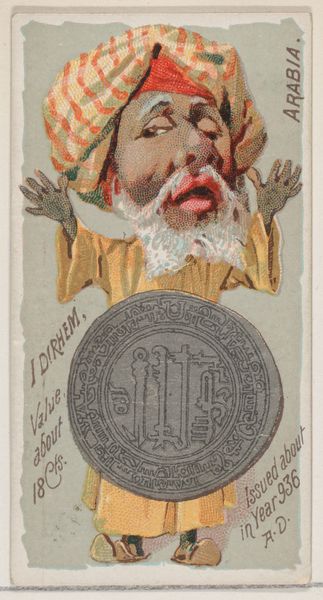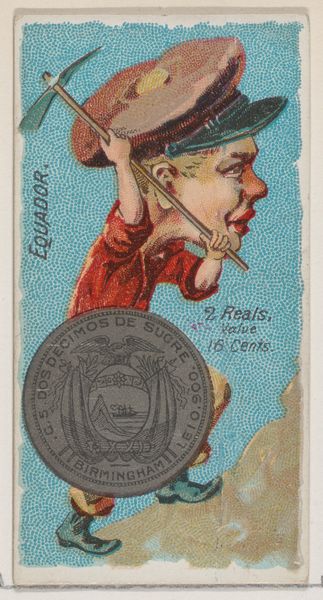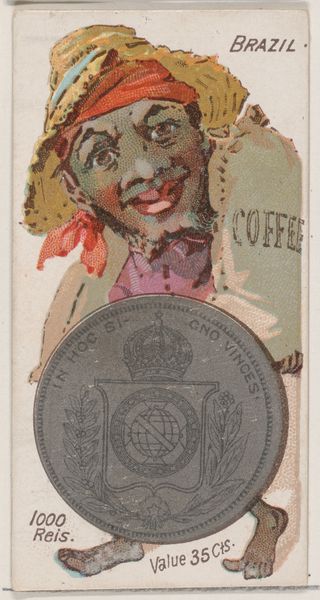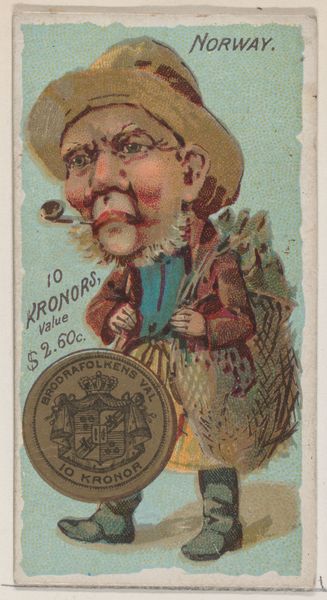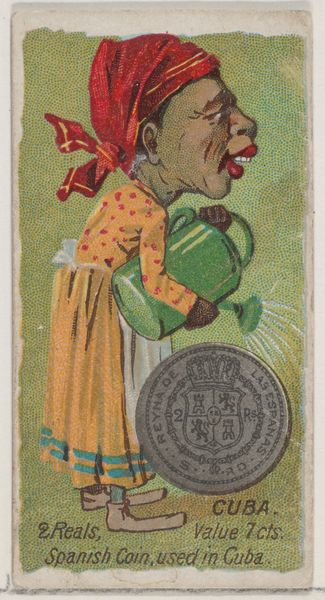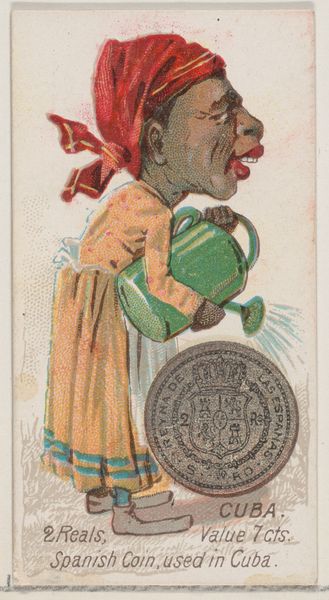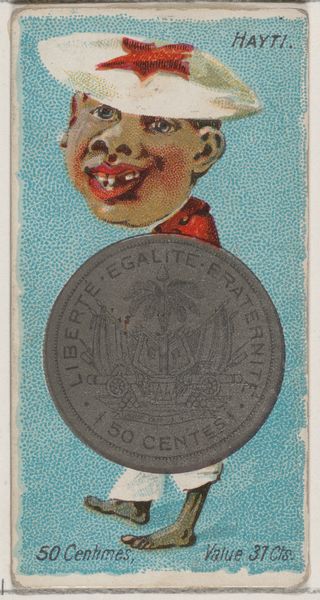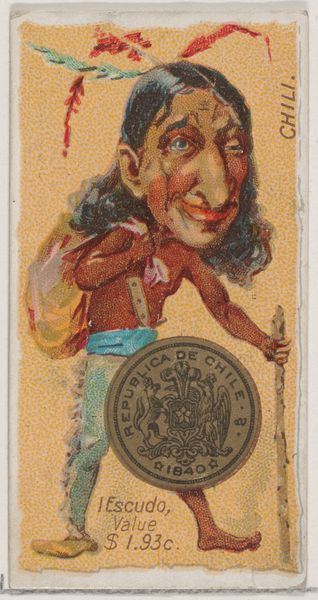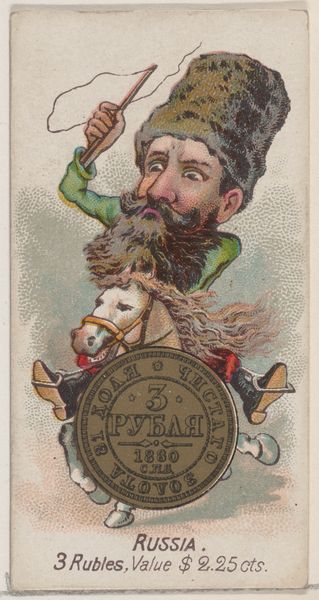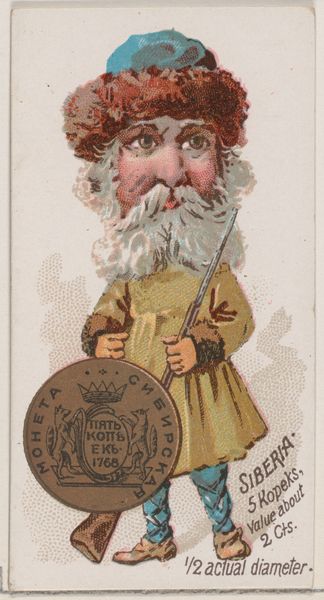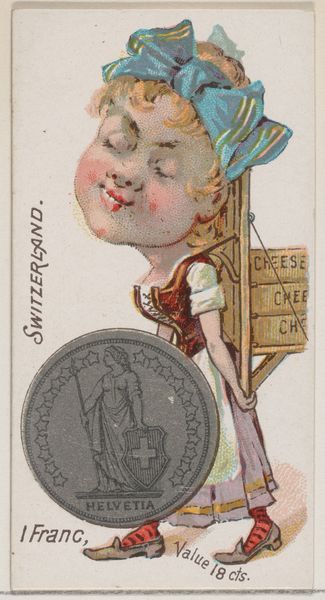
Caricatured Arabian, 1 Dirhem, from the series Coins of All Nations (N72, variation 2) for Duke brand cigarettes 1889
0:00
0:00
drawing, coloured-pencil, print, poster
#
drawing
#
coloured-pencil
#
narrative-art
# print
#
caricature
#
figuration
#
coloured pencil
#
orientalism
#
poster
Dimensions: Sheet: 2 3/4 x 1 1/2 in. (7 x 3.8 cm)
Copyright: Public Domain
Curator: This vividly colored piece is titled "Caricatured Arabian, 1 Dirhem," and it's from the series "Coins of All Nations" created in 1889 for Duke brand cigarettes. Editor: Well, right away, that title sets off some alarm bells. The figure's exaggerated features…it's hard to look past the potential for stereotypical representation, even bordering on offensive. Curator: It’s certainly a product of its time. These trade cards were meant to be collectible and, frankly, to promote the W. Duke, Sons & Co. brand, using a rather unsubtle form of… exoticism. We see here colored-pencil drawing, rendered as a mass-produced print. Editor: Yes, mass-produced—key word. The focus wasn’t on individual artistry but on rapid dissemination. You can practically feel the factory floor in the flatness of the colors and the uniformity of the linework. I’m interested in that relationship between artistry and manufacture—the labor involved. Curator: Absolutely, the series presents an interesting look at the social and cultural attitudes of the late 19th century through these consumer objects. Consider the intended audience. What sort of image of "Arabia" was being constructed and consumed by Americans? Editor: The emphasis on caricature flattens an entire region and culture to a set of easily digestible tropes for commercial profit, doesn’t it? And that placement of the coin—is that a shield? As if this exaggerated figure needs protecting? Or is he peddling it, eager to trade on his perceived otherness? The layering of stereotypes makes it more complex. Curator: Indeed. These images served a dual purpose of informing and, more pointedly, creating and reinforcing cultural biases. We have to consider how tobacco companies were using this imagery to position their brand within a global context and how that, in turn, affected public perceptions of different cultures. Editor: Ultimately, these weren’t isolated images but components of a broader system: manufacturing, trade, marketing, consumption and prejudice, all intertwined. Curator: Exactly. And that understanding of the forces at play is crucial to viewing it critically. It challenges us to see beyond the immediate, aesthetic impression. Editor: And to look more carefully at who’s profiting from what…and at whose expense.
Comments
No comments
Be the first to comment and join the conversation on the ultimate creative platform.
